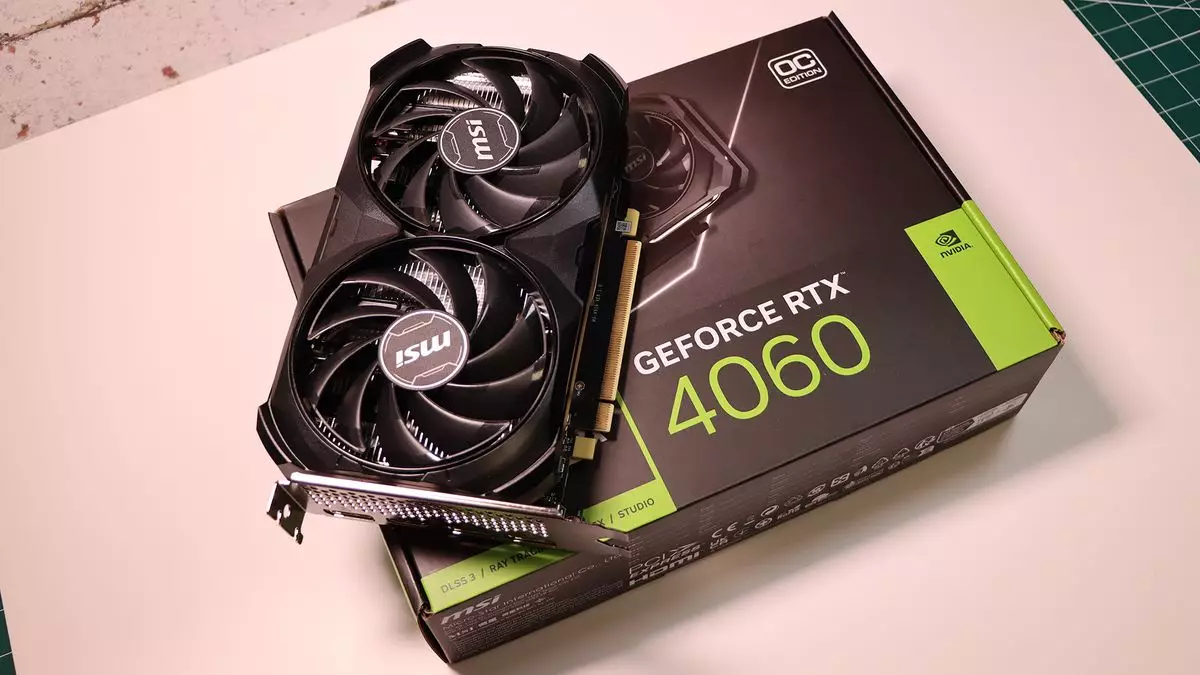The latest Steam hardware survey reveals intriguing shifts in the graphics processing unit (GPU) landscape, particularly as gamers are capitalizing on recent price reductions, especially for the entry-level offerings in Nvidia’s 40-series lineup. As the gaming community anticipates next-generation graphics cards, a notable increase in usage of models like the GeForce RTX 4060 showcases a keen interest among consumers navigating the fluctuating market conditions. Though the percentage increases may appear marginal at first glance, they symbolize broader trends that reflect the ongoing evolution of gaming technology and consumer behavior.
According to the September survey data, Nvidia’s GeForce RTX 4060 sees a 1.17% uptick in user adoption, complemented by a 0.76% rise for the RTX 4060 Ti. While these figures might seem insignificant initially, they reflect a substantial relative increase, particularly for the RTX 4060, which rose from a 3.41% to a 4.58% market share—representing an impressive 34% increase. This surge is particularly noteworthy when combined with its mobile variant, which shares the same core architecture and pushes the aggregate market presence of this GPU to surpass all other models within the diverse and ever-expanding Steam dataset.
However, it is crucial to contextualize these figures within the broader spectrum of hardware usage. This data considers only a segment of consumers—those actively using Steam and participating in the hardware survey—thus it may not represent the entire gaming population. Notably, increases in the Simplified Chinese language settings within the platform (up by 1.54%) may suggest that the growing numbers in RTX 4060 users could partially stem from emerging markets. The release of games like “Black Myth: Wukong” might also be stimulating GPU demand in this region.
In the Western markets, the uptick in the adoption of these budget-friendly GPUs seems plausible given the horizon of next-gen offerings from both Nvidia and AMD. As the release of the RTX 50-series and RX 8000-series draws near, consumers are faced with critical decisions: buy a more affordable current-gen GPU or bide their time for the next wave of high-end cards. For many, the long-standing inflated prices of graphics cards have only very recently begun to level out, making the RTX 4060, especially priced below $300, a compelling entry point for gamers who have felt priced out until now.
Historically, the period preceding major hardware launches often sees a flurry of activity in mid-range and budget card sales—a pattern that many seasoned gamers recognize. I can personally testify to this; I took advantage of similar market conditions when acquiring my own RTX 3060 Ti prior to the introduction of the 40-series. This cyclical pattern underscores the strategic nature of consumer purchasing behaviors in response to market dynamics.
While the surge in GPU adoption is certainly front and center, the survey data also reveals subtle shifts in operating system preferences among Steam users. Notably, Windows 10 usage experienced a 1.57% increase, whereas fewer users are utilizing Windows 11, which has seen a decline of 1.48%. This fluctuation indicates a potential hesitance among gamers to fully transition to newer software—a crucial consideration as developers optimize games for the latest systems.
While it can be easy to overlook, the overall trends in the Steam hardware survey can offer meaningful insights into the broader technology ecosystem. The shifts in consumer preference and market demand play a critical role in shaping future product development and release strategies, and the forthcoming launch of new hardware will undoubtedly generate further engagement within the gaming community.
As we await the release of Nvidia’s RTX 50-series and AMD’s RX 8000-series, it will be fascinating to observe how quickly and effectively gamers begin adopting these new offerings. Will they embrace these products immediately upon launch, or will they opt for more economically viable existing options? Additionally, it would be refreshing to see AMD adopt a competitive pricing strategy from the get-go, potentially reshaping the market landscape for both consumers and manufacturers alike. Until then, we can glean valuable lessons from current survey data, providing a glimpse into the evolving priorities of gamers and the implications for industry trends.

